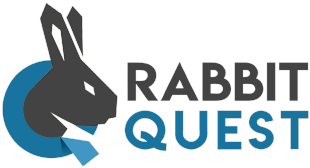How do you guide stakeholders during your health initiative?🧑💼
Knock, Knock. Your vitality initiative is about to start, and they are next to your desk. The various stakeholders are curious about the latest information surrounding your initiative. They naturally want to know what your vitality initiative is about, what the goal is, and what results you want to achieve. In the midst of your vitality initiative, you are actually also supposed to update them, but that can sometimes feel like an extra puzzle to add. From our conversations with 500+ HR Managers and their management team, we have discovered 3 key components needed to make all these puzzle pieces fall together seamlessly. This way, you yourself can stay focused on your vitality initiative and employees.
Time to read: 5 minutes
Be there early 🕰️
Imagine: you want to launch a wellness program with yoga classes and mindfulness sessions, but stakeholders are mainly interested in reducing absenteeism and the physical health of employees. For example, you are launching a new vitality initiative where you want to encourage employees to exercise more during the working day. However, the management team has indicated they would like the focus to be vitality outside the workplace. If so, your vitality goals are not quite aligned with the management team's. When these are not quite aligned, engagement and interest may disappear. More importantly, if these goals are not properly aligned, the management team, for example, may not want to proceed with your vitality initiative.
Plan a brainstorming session
You could prevent this by getting everyone on the same page beforehand. For instance, early strategic sessions with stakeholders can be organised to gather their input and understand their expectations. This way, you can align your vitality initiative with their business goals and create a common vision.
Use data as your best friend
Stakeholders love data, but we'll tell you more about that later. They want to know if your vitality initiative is going to make an impact. You can only know this if your vitality initiative has measurable components. Make sure you share just these measurable components, explaining how you will measure your initiative's progress. How will you find out for them whether the vitality initiative is working, whether employees are participating, and whether it is actually reducing absenteeism, for example? For example, look at the goal that stakeholders care about. Then adapt a part of your vitality initiative so that you can start measuring their specific goal as soon as the initiative starts. If you show that you also include their goal in your initiative and actively measure the results for this goal, they will probably be just as eager to get started.
These are the key components for presenting your vitality initiative to the management team.
Keep them in the loop ➰
You are halfway through your vitality initiative, and you see that it is catching on well. Great news! You see more and more people signing up and more and more people responding enthusiastically. Maybe you're about to share a midterm competition. You see that your initiative is going well, but other stakeholders don't always have a clear view of this. To keep them involved in your vitality initiative after the launch, it is important to engage them in developments, changes, and milestones.
Share multiple updates
You could almost start to think of your initiative as an engaging series, with your stakeholders wanting to know how it ends. For example, communicate updates and successes of your initiative every week via email. Focus on topics and key performance indicators that they find important. Mention, for example, how much costs have been saved in the cafeteria or how many employees participate and are involved in the program. For example, make it extra personal by adding an employee's opinion each time. You can also share a scoreboard or hall of fame with an intermediate ranking of the competition. This way, they will start looking forward with excitement and enthusiasm to see who the final winner will be.
Ask for input and feedback
Stakeholders of your organisation and vitality initiative love to share their opinions. Don't we all have some of that? It's always nice to follow along and give feedback or think about areas for improvement. Involve your stakeholders in decision-making or change, even in the middle of your initiative. You might find that you want to make some adjustments during the initiative. This is the perfect opportunity to get the management team involved and provide input. This way, you can also ensure that their goals align with your vitality goal.
Get them to participate in your campaign
Have a few stakeholders become super enthusiastic? You can get them even more involved in your initiative by making them part of your marketing strategy. That might sound a bit crazy. However, you can also develop a marketing strategy for a vitality initiative. For example, at two points during your initiative, release a small interview in which the stakeholder interacts with employees participating in the vitality initiative. Include a happy photo of the stakeholder and the employee. In this way, an updated e-mail suddenly becomes a personal interview with tips and tricks, showing that the management team is also behind the initiative.
Share the data 📊
Where lions are the king of the jungle, 'data' is the king of the management team, right? Stakeholders love data and numbers because it makes them feel they have insight into the impact of their investment. They would prefer to know as soon as possible whether the investment in your vitality initiative is paying off. Therefore, it is useful to create a dashboard with key performance indicators (KPIs) that they find important such as absenteeism rates, productivity, and satisfaction scores. Make sure you have a dashboard that you can easily track and adjust so that it takes little time to provide an update every week. You can share these results weekly, but you can also give them access to the dashboard so they can look at them in their own time.
Use a dashboard
You want to show stakeholders how the vitality initiative contributes to overall company goals, such as improving company culture and increasing employee engagement. You can include this in your dashboard by comparing it with previous initiatives, for example. Is the number of employees participating in your initiative increasing compared to the previous initiative? You can also add, for example, a satisfaction survey that you compare with a previous initiative.
Keep it structured
Keeping a dashboard may not be your first priority; you are fully focused on the initiative and the employees themselves. However, getting stakeholders excited is important to bring them back to your next initiative. It can always be that one stakeholder is a bit more skeptical than another. It is, therefore important to put together your dashboard in a clear and structured way to avoid confusion or questions. The dashboard is an important indicator for stakeholders whether the initiative is a success or not, and you want to avoid extra confusion or ambiguity with that. This also makes it easy for them to understand and evaluate the impact of the initiative.
With these valuable tips in mind, you will be well equipped to manage stakeholders confidently during your vitality initiative. Continue to communicate, engage, and share data to build a successful and impactful programme that not only promotes the health and well-being of your employees but also contributes to the overall business goals and culture.
Want to gain more insight into the impact of your vitality initiative? Or do you need a dashboard that easily and automatically captures data? Schedule an appointment with one of us and then let's have a quick digital update.




